Notes
Visual Scholars Read the Fake Russian Ads – Part 2
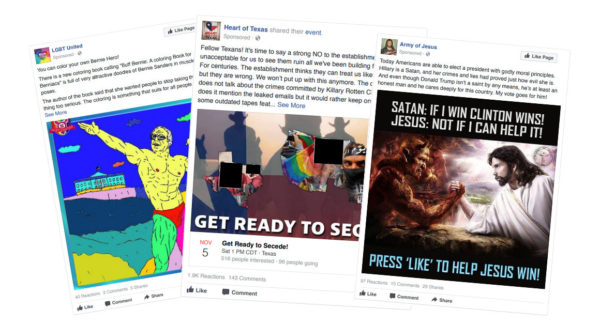
After all the controversy over the fake ads Russian trolls ran during the 2016 presidential election, reports have it that they are at it again. In spite of assurances by Facebook that safeguards are in place, more ads have appeared targeting the crucial senate race in Alabama.
We asked seven visual scholars to analyze one of the original ads released by the House Intelligence Subcommittee. We ran part one last week, and this is part two. In this installment, Tim Barney looks at Bernie Sanders and “the Clinton Foundation problem” from “Born Liberal.” Christa Olson reacts to a “Black Matters” ad. And, Texan Elizabeth Kaszynski Gilmore evaluates “Get Ready to Secede” from “Heart of Texas.”
1. Born Liberal (Tim Barney)
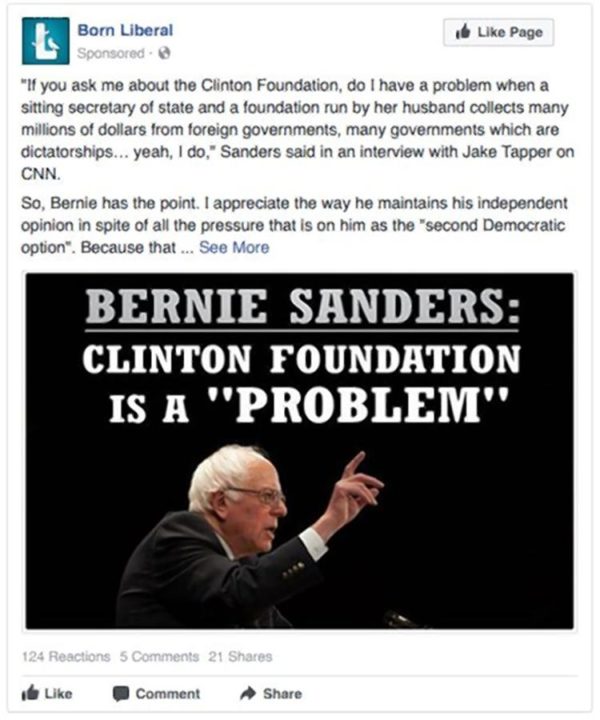
The visual is simple enough: an upper body-shot of an active Bernie Sanders, finger-wagging, at a podium, with the accompanying text, “Clinton Foundation is a ‘Problem.’” Despite its apparent simplicity, the ad’s nuances become apparent through arguably one of the few defining images of the 2016 campaign. The modest black-suit, the tousled white hair, and the candidate’s much-parodied hand gestures connote a sense of humility and standing up for one’s principles in a dark world.
Extracted from an interview Sanders gave to CNN about various topics, including Clinton, the stark black background and the capped text suggests seriousness and alarm. The determined and emphatic Sanders looks outward toward an unseen crowd, in this case the viewers of the ad. Decontextualization is a hallmark of political advertising, where photos are uprooted and repurposed toward new ends. In this case, the dark ad emphasizes Sanders as a bulwark against Clinton’s corruption. The accompanying text bears this out, as “Born Liberal” writes “I appreciate the way he maintains his independent opinion,” while then juxtaposing Hillary Clinton and her Foundation as engaging in “organized crime.”
The ad is perhaps most notable for its lack of specificity in its application of Sanders—any “principled” attack from Sanders against Clinton could have been substituted here. The power is in his ability to evoke morality and independence. Despite media questions about Sanders’ own ethical choices in past votes and personal business dealings, Sanders transcended the particulars of the race and his own loss to Clinton, and went on to become, through ads like “Born Liberal,” an iconic visual symbol of political principle that could potentially divide liberal voters against Hillary Clinton.
2. Black Matters (Christa Olson)
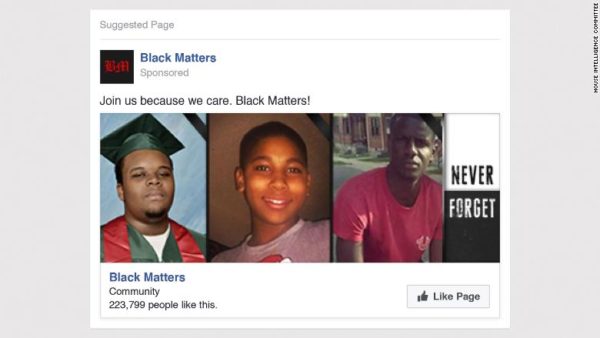
What is the opposite of a smoking gun?
If U.S. liberals were hoping for incendiary proof of Russia’s intervention on Donald Trump’s behalf in the 2016 election, Politico’s article announcing the House intelligence panel’s release of social media ads is more a bucket of tepid water. The low-quality designs, relatively small impact (as measured by the “results” in impressions and clicks given for each ad), and organization of the article all serve to deflate the power of Russia’s disinformation campaign.
This first ad featured in Politico’s article effectively punctures the story. Though a few Clinton baiting and hating ads will come later (though they never seem so serious), this earliest ad—from July 2015—seems a slightly clueless but also innocuous appeal to supporters of Black Lives Matter. Michael Brown, Tamir Rice, and Freddie Gray appear as innocents, each picture marked with a black mourning band. Maybe eventually this page will get used for unsavory ends, but the article doesn’t tell us that. Instead, offered in isolation and at the top of the Politico’s article, this “Black Matters” ad effectively bursts the argument that Russia operated a well-orchestrated and carefully targeted campaign against the Democrats.
If Russia manipulated us by showing us Black lives cut short by police violence, what could their campaign possibly have to do with support for Donald Trump? By showing us Black lives and Black deaths first, Politico seems to suggest that there is actually nothing to see.
3. “Heart of Texas” (Elizabeth Kaszynski Gilmore)
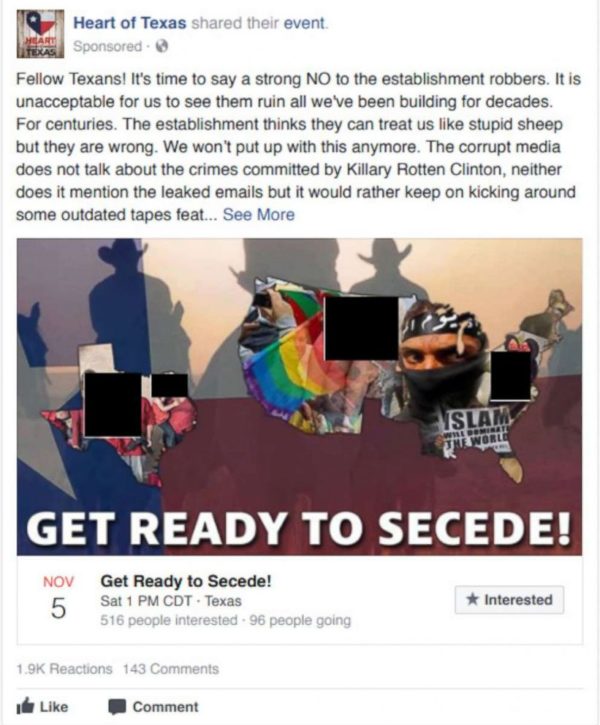
As a born and bred Texan, I remember the conversations held among high schoolers about the hypothetical viability of Texas as a nation. As an adult, I am still a bit pretentious about theme parks that call themselves “Six Flags” and only fly U.S. flags, not the six national flags that have flown at one point over the land that is now Texas. Texas is a place that marks all of its stuff as Texan: the trucks are “Texas Edition,” school kids pledge the Texas flag, and the hotel waffles are in the shape of Texas.
In the image above, Texas is visually separated from the rest of the continental United States. In the silhouette of Texas, there is a family, in red t-shirts and blue jeans, holding guns. The rest of the continental United States are filled in by rainbow flags in the west and radicalized Islam in the east. The background to these divisions is a faded Texas flag and the shadowed silhouettes of cowboys on horseback, calling out a deeply held affinity for the Western character, who is often realized in real life in Texas, due both to the large numbers of cattle farms and stockyards, as well as to culture. And yet, for all of this deep Texas imagery, the text attached to the image barely talks about Texas at all. While it addresses “Fellow Texans,” it immediately moves to focus on “the establishment,” “the corrupt media,” and “Killary Rotten Clinton.”
An enthymeme, an argument in which a premise or the conclusion is unexpressed, the ad presumes that “Fellow Texans” will make the jump from “the establishment” to Texas independence. Considering that the ad sponsor was a Russian linked account, the associations indicate a larger disruptive goal, to which Texas could play a part, in assuming that properly interpellated Texans will recognize LGBTQIA and Muslim identities as always already both extreme, and the enemy.
The rhetoric of Texas Secession calls for aggressive self-defense against imagined or presumed aggressors like the United States Federal Government, international terrorists, or campaigns for equal human rights. This aggression, visualized here by the armed Texas family against the rest of the United States, promotes a distrust of government, of democracy, and of civil and civic discourse with fellow citizens. If Russia was interested in drawing on already held ideological divisions in the United States, then they chose well by stoking Texas Secession.
***
This week, Reading the Pictures is asking for your support. We are the rare organization promoting visual literacy and media literacy at a time when both are so essential. Help sustain our role as vigorous advocates for effective news and concerned photography with a tax-deductible donation here, or at the bottom of the post. Thanks so much.
***
Tim Barney is Associate Professor of Rhetoric & Communication Studies at the University of Richmond. He is the author of Mapping the Cold War: Cartography and the Framing of America’s International Power (UNC Press, 2015) and teaches courses on rhetoric, politics, and foreign policy.
Christa Olson is Associate Professor of Composition & Rhetoric in the English department at the University of Wisconsin-Madison. Her scholarship and teaching focus on how pictures shape values and beliefs, especially at the level of national identity. Much of her work, including her book Constitutive Visions is about rhetorical history and visual culture in Latin America.
Elizabeth Kaszynski Gilmore is a Ph.D. Candidate in Communication and Culture with a focus on Rhetoric at Indiana University. Her research interests include visuality, race, and coloniality.
Special thanks to Katie Irwin for organizing this effort.
See Visual Scholars Read the Fake Russian Ads Part 1 here.
Photos: House Intelligence Subcommittee Caption: Facebook ads purchased by Russia are pictured.
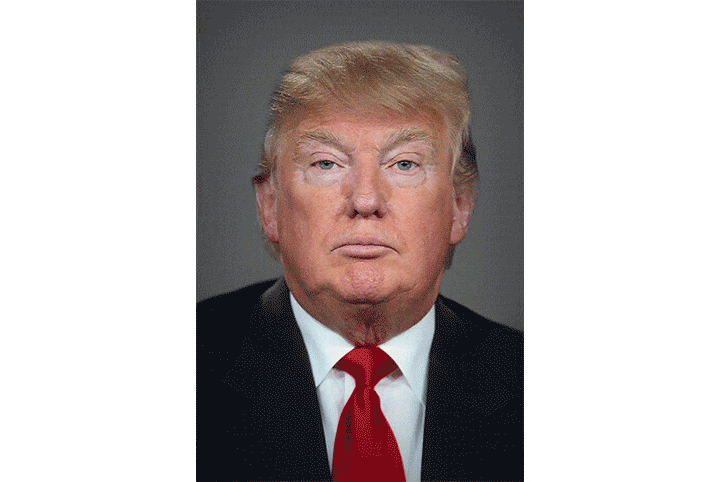

Reactions
Comments Powered by Disqus